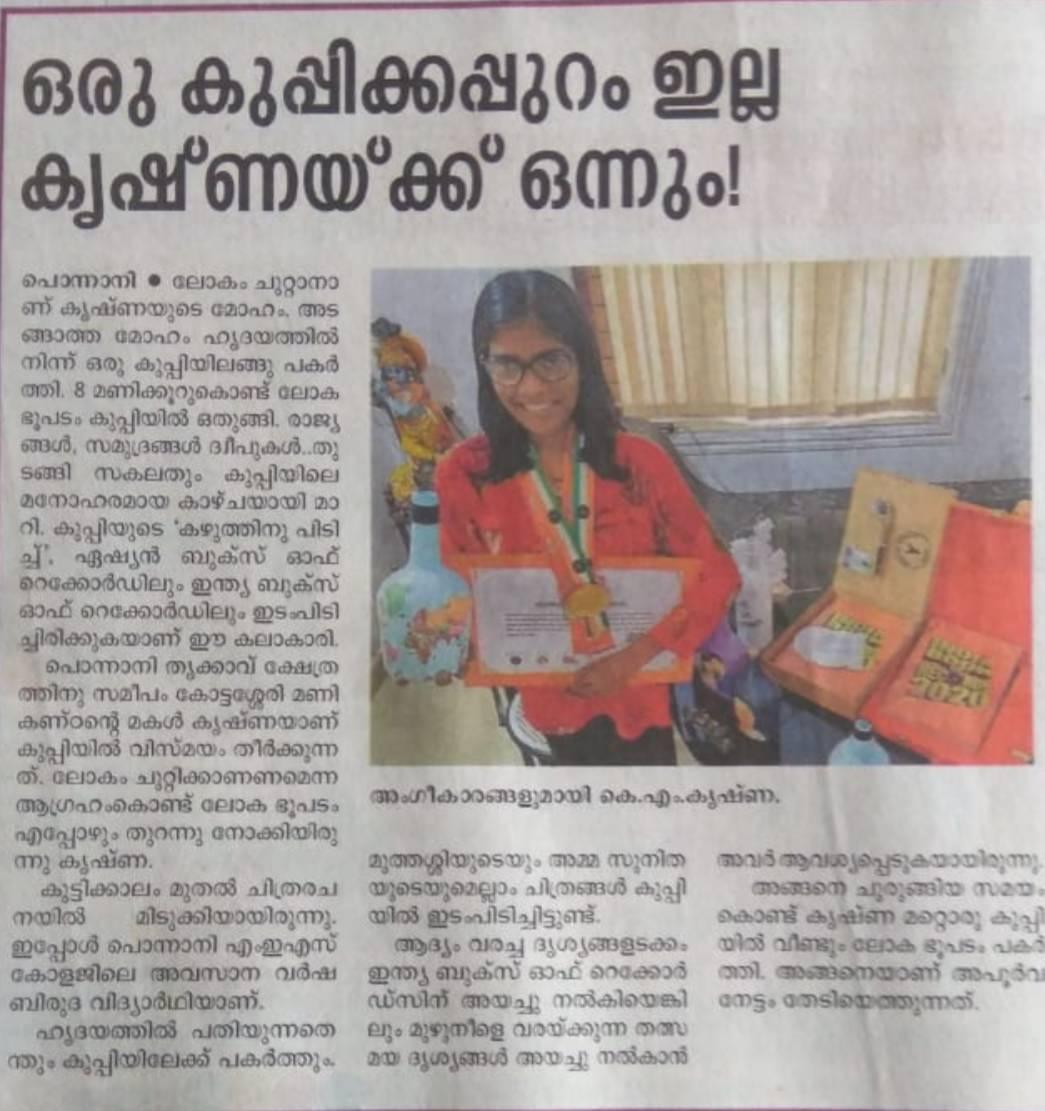IPR Cell
Intellectual property plays an important role in providing a competitive edge to any Institution. The tangible assets like inventions, designs, software, brand name and other creative & innovative ideas are more valuable than physical assets. MES Ponnani College IPR Cell is committed to encourage, protect, manage and commercialize Intellectual Property such as Patent, Copyright, Trademark etc. generated through the College. The cell creates conducive environment in the academics for the development of Intellectual Property. Faculty and students of MES Ponnani College are actively participating in the IPR filing process in different disciplines of Engineering & Technology.
Importance of IPR
It is necessary to protect the Intellectual property in order to enable organizations to earn recognition or financial benefits. Governments of various countries protect the innovative ideas of the inventors through Intellectual Property Rights (IPR). Recently, IPR has become a central issue in the developed and developing countries. The rationale for this IPR lies in the need to create awareness about the importance of IPRs as a marketable financial asset and economic tool among the researchers, faculty and students of the College. Intellectual property Rights: means the rights derived from the IP e.g. Patents, registered designs, copyright etc. Indian Government has revised the National IPR Policy in May 2016 and its Vision, Mission and Objectives are given as follows.
Vision
An India where creativity and innovation are stimulated by Intellectual Property for the benefit of all; an India where intellectual property promotes advancement in science and technology, arts and culture, traditional knowledge and biodiversity resources; an India where knowledge is the main driver of development, and knowledge owned is transformed into knowledge shared.
Mission
Stimulate a dynamic, vibrant and balanced intellectual property rights system in India to:
foster creativity and innovation and thereby, promote entrepreneurship and enhance socioeconomic and cultural development, and
focus on enhancing access to healthcare, food security and environmental protection, among other sectors of vital social, economic and technological importance.
Objectives
IPR Awareness: Outreach and Promotion – To create public awareness about the economic, social and cultural benefits of IPRs among all sections of society. - “Creative India; Innovative India”
Generation of IPRs - To stimulate the generation of IPRs
Legal and Legislative Framework - To have strong and effective IPR laws, which balance the interests of rights owners with larger public interest.
Administration and Management - To modernize and strengthen service oriented IPR administration
Commercialization of IPR - Get value for IPRs through commercialization
Enforcement and Adjudication - To strengthen the enforcement and adjudicatory mechanisms for combating IPR infringements
Human Capital Development - To strengthen and expand human resources, institutions and capacities for teaching, training, research and skill building in IPRs.
Types of IP:
The intellectual properties can be broadly listed as follows:
Patent: is an exclusive right granted for an invention, which is a product or a process that provides a new way of doing something, or offers a new technical solution to a problem.
Copyright: is an exclusive right given to the author of the original literary, architectural, dramatic, musical and artistic works; cinematograph films; and sound recordings.
Trade/Service mark: means a mark capable of being represented graphically and which is capable of distinguishing the goods or services of one person from those of others and may include shape of goods, their packaging and combination of colours.
Industrial Design: means only the features of shape, configuration, pattern, ornament or composition of lines or colours applied to any article whether in two dimensional or three dimensional or in both forms, by any industrial process or means, whether manual, mechanical or chemical, separate or combined, which in the finished article appeal to and are judged solely by the eye; but does not include any mode or principle of construction or anything which is in substance a mere mechanical device.
IC Layout Designs: means a layout of transistors and other circuitry elements and includes lead wires connecting such elements and expressed in any manner in a semiconductor integrated circuit.
New Plant Variety: a plant variety that is novel, distinct and shows uniform and stable characteristics.g) Biotechnology Inventions: include recombinant products such as vectors, nucleotide sequences and micro‐organisms.
Traditional Knowledge: The knowledge developed by the indigenous or local communities for the use of a natural resource with respect to agriculture, food, medicine etc. over a period of time and has been passed from one generation to another traditionally.
Geographical Indications: means an indication which identify such goods as agricultural goods, natural goods as originating or manufactured in the territory of a country or manufactured in the territory of a country or a region or locality in that territory where a given quality, reputation or other characteristic of such goods is essentially attributable to its geographical origin and in case where such goods are manufactured one of the activities of either the production or of processing or preparation of the goods concerned takes place in such territory, regions or locality as the case may be.
In-Charges
Dr. P JAYARAM
Co-ordinator









